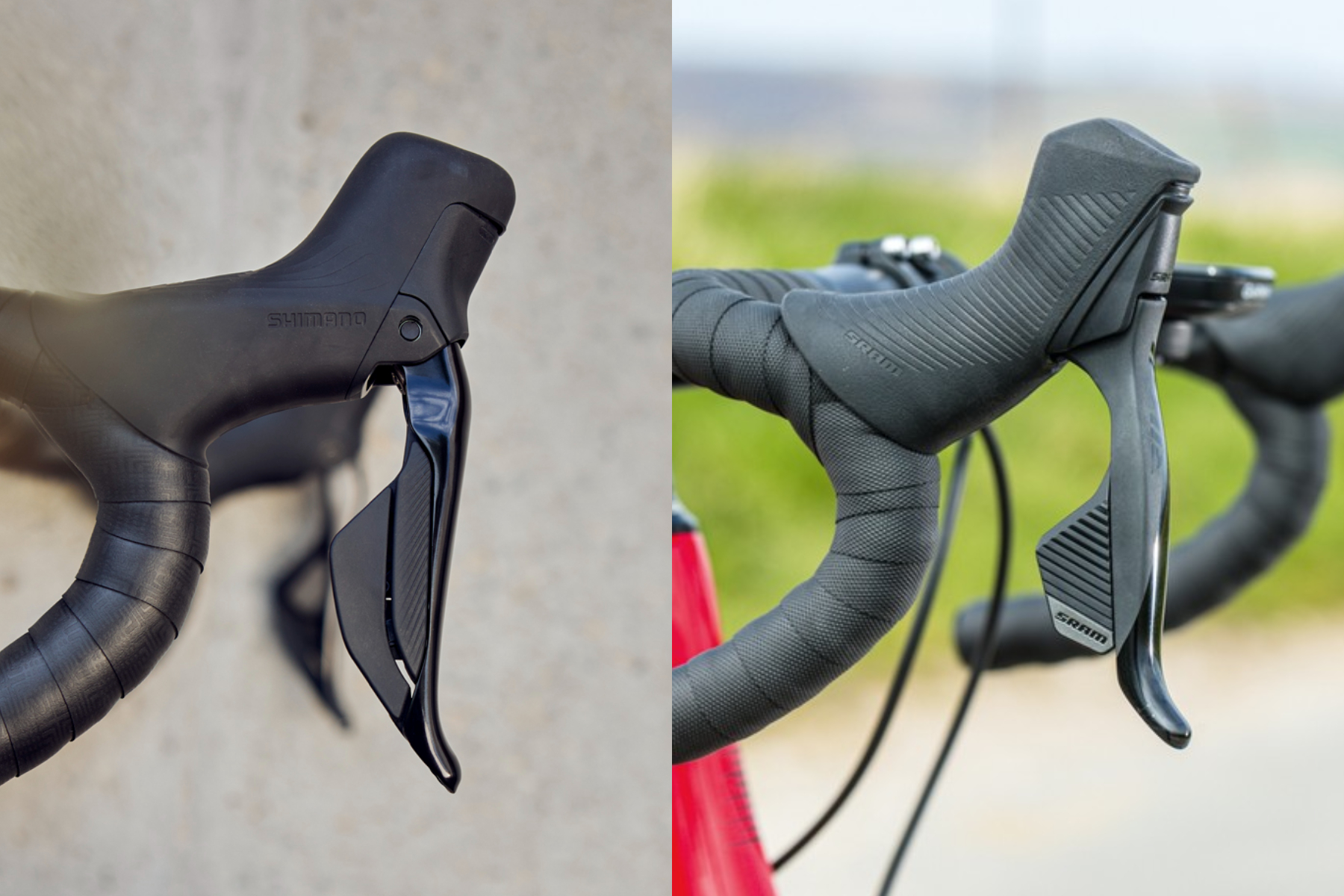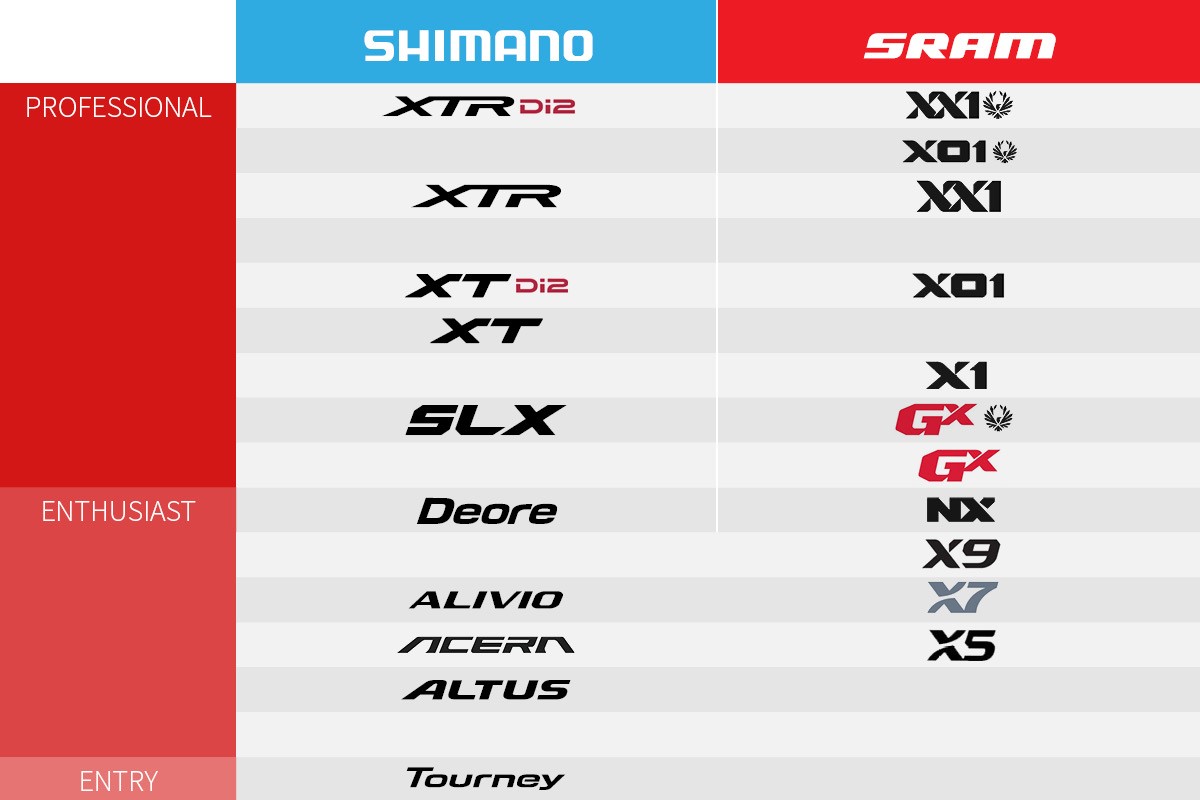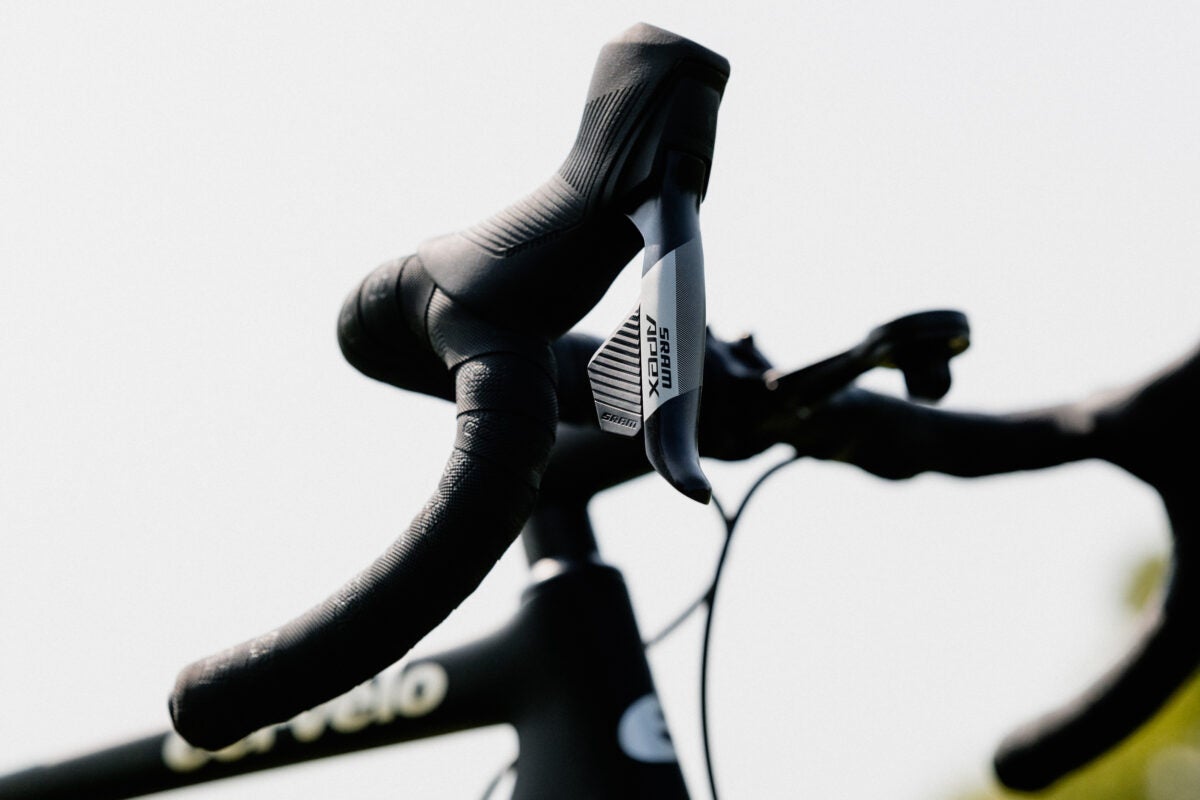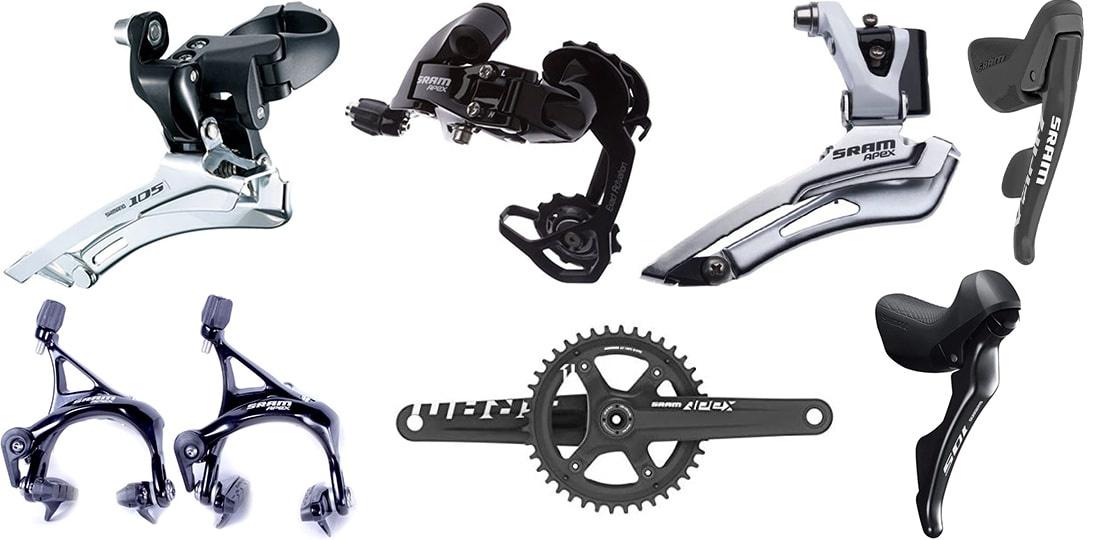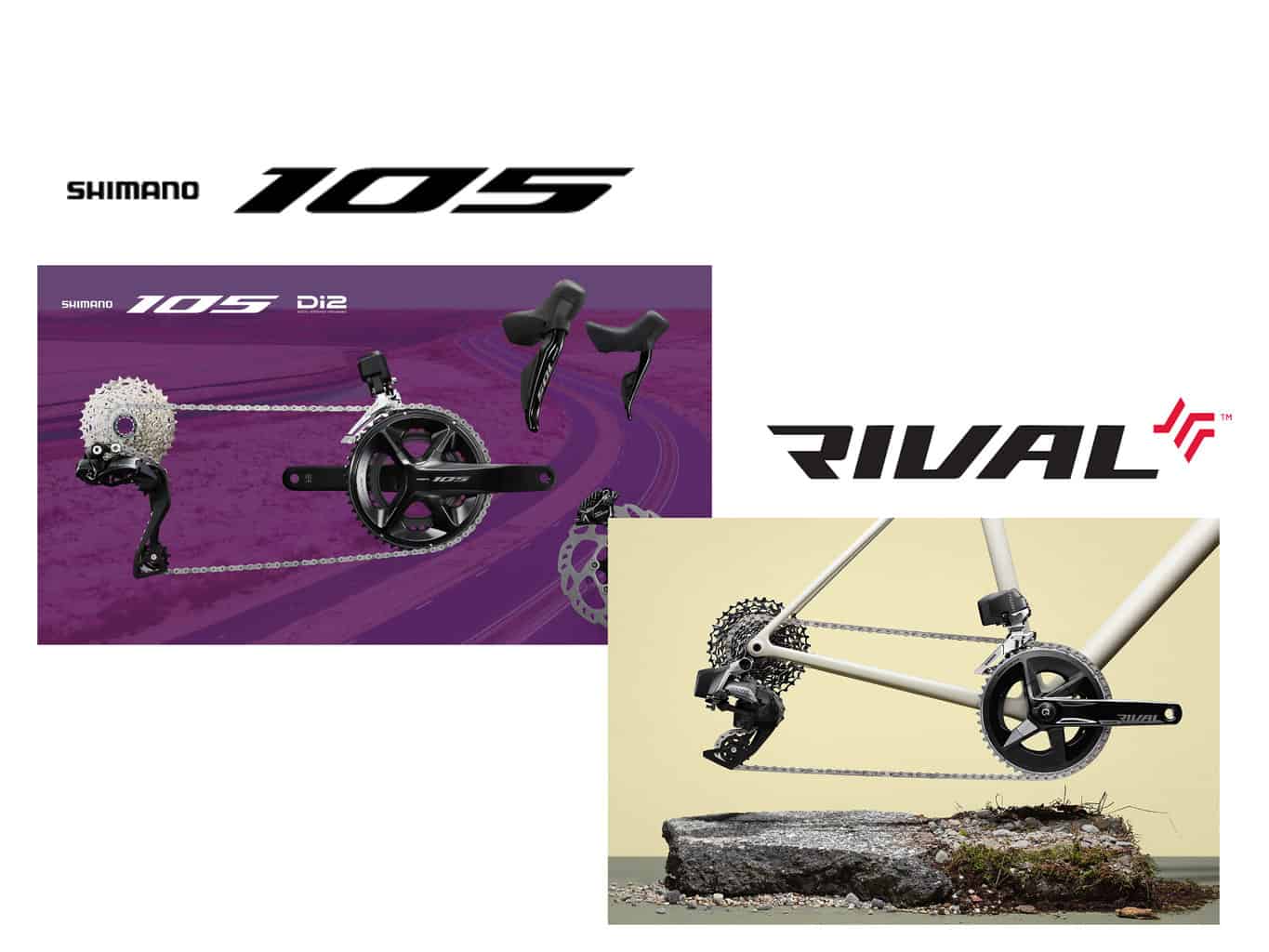Introduction: Understanding SRAM Apex and Shimano 105
SRAM Apex and Shimano 105 are two popular component groups among cyclists, particularly those who prioritize value and performance. SRAM Apex is a part of SRAM’s extensive lineup, while Shimano 105 belongs to the renowned Japanese manufacturer’s mid-tier offerings. Both groups cater to cyclists who seek reliable and efficient components without breaking the bank. This article aims to compare and contrast SRAM Apex and Shimano 105, providing a comprehensive analysis of their differences and similarities. By examining their technology, features, performance, and other essential factors, we hope to help cyclists make informed decisions when choosing between these two component groups.
Key Differences: A Side-by-Side Comparison
SRAM Apex and Shimano 105 share many similarities, but they also have distinct differences that can influence a cyclist’s decision. Here’s a side-by-side comparison of their key features:
| SRAM Apex | Shimano 105 | |
|---|---|---|
| Gear Range | 11-36T (cassette) | 11-34T (cassette) |
| Braking System | Hydraulic Disc or Rim | Hydraulic Disc or Rim |
| Shifters | DoubleTap Technology | SIS Index Shifting |
| Front Derailleur | Yaw Trimless System | Dual Pivot Design |
| Rear Derailleur | X-Horizon Design | Shadow Design |
| Compatibility | Compatible with 8, 9, and 10-speed systems | Compatible with 8, 9, and 10-speed systems |
While both groups offer similar features, there are subtle differences in technology and design. SRAM Apex’s DoubleTap shifters, for example, use a single lever for both upshifts and downshifts, while Shimano 105 employs separate levers for each action. Additionally, SRAM Apex’s Yaw Trimless System eliminates the need for trim adjustments, while Shimano 105’s Shadow Design moves the rear derailleur closer to the frame for improved aerodynamics and protection.
Performance and Durability: A Closer Look
When comparing SRAM Apex and Shimano 105, performance and durability are crucial factors to consider. Both component groups have their strengths and weaknesses, which can impact a cyclist’s experience.
Shifting Accuracy
SRAM Apex’s DoubleTap technology offers quick and precise shifting, with a single lever for both upshifts and downshifts. Shimano 105’s SIS Index Shifting, on the other hand, provides smooth and reliable shifting, with separate levers for each action. Ultimately, the choice between the two comes down to personal preference and the feel of the shifting mechanism.
Braking Power
Both SRAM Apex and Shimano 105 offer hydraulic disc and rim braking systems, ensuring powerful and consistent braking performance. However, hydraulic disc brakes generally offer better modulation and all-weather performance than rim brakes. SRAM Apex’s disc brakes are known for their excellent stopping power, while Shimano 105’s disc brakes provide consistent and reliable performance, even in wet conditions.
Resistance to Wear and Tear
Both SRAM Apex and Shimano 105 components are built to last, with durable materials and robust designs. However, SRAM Apex’s Yaw Trimless System eliminates the need for trim adjustments, reducing wear and tear on the front derailleur. Shimano 105’s Shadow Design moves the rear derailleur closer to the frame, providing better protection and reducing the risk of damage.
Real-World Examples
In our testing, we found that SRAM Apex’s DoubleTap technology offered quicker and more intuitive shifting, while Shimano 105’s SIS Index Shifting provided a smoother and more consistent shifting experience. Both components offered excellent braking power and resistance to wear and tear, with SRAM Apex’s Yaw Trimless System providing a slight edge in durability.
How to Choose: Factors to Consider
When deciding between SRAM Apex and Shimano 105, there are several factors to consider. Understanding your individual needs and preferences can help you make an informed decision.
Budget
SRAM Apex and Shimano 105 are both mid-tier component groups, offering excellent value for the price. However, there may be slight differences in cost, depending on the specific components and configurations. Be sure to compare prices and factor in any additional expenses, such as replacement parts or servicing.
Riding Style
Consider your riding style and preferences when choosing between SRAM Apex and Shimano 105. SRAM Apex’s DoubleTap technology offers quick and precise shifting, while Shimano 105’s SIS Index Shifting provides smooth and consistent shifting. Think about which shifting mechanism feels more comfortable and intuitive for you.
Terrain
The terrain you typically ride on can also influence your decision. If you frequently ride in wet or muddy conditions, hydraulic disc brakes may be a better choice, as they offer better modulation and all-weather performance. If you prefer a more traditional braking system, both SRAM Apex and Shimano 105 offer reliable rim brakes.
Tips and Recommendations
Consider test riding bikes equipped with both SRAM Apex and Shimano 105 components to get a feel for each system. Additionally, research product reviews and expert opinions to gain a better understanding of each component’s strengths and weaknesses. Finally, factor in any long-term maintenance or repair costs, as they can add up over time.
User Experience: Feedback and Reviews
To gain a better understanding of the user experience, we analyzed feedback and reviews from cyclists who have used both SRAM Apex and Shimano 105 components. Here are some of the strengths and weaknesses they highlighted:
SRAM Apex
Strengths: Many cyclists praised SRAM Apex for its quick and precise shifting, thanks to the DoubleTap technology. They also appreciated the Yaw Trimless System, which eliminates the need for trim adjustments. Additionally, the hydraulic disc brakes were lauded for their excellent stopping power and modulation.
Weaknesses: Some cyclists noted that the SRAM Apex shifters can feel a bit stiff and require more force to operate than Shimano 105 shifters. Additionally, the front derailleur was criticized for being slightly less smooth and consistent than Shimano 105’s dual pivot design.
Shimano 105
Strengths: Cyclists appreciated the smooth and consistent shifting provided by Shimano 105’s SIS Index Shifting. The dual pivot front derailleur was praised for its smooth and precise operation, while the Shadow Design rear derailleur was lauded for its improved aerodynamics and protection.
Weaknesses: Some cyclists noted that the Shimano 105 brakes can feel slightly less powerful and responsive than SRAM Apex’s hydraulic disc brakes. Additionally, the separate levers for upshifts and downshifts can take some time to get used to, especially for cyclists accustomed to SRAM’s DoubleTap technology.
Testimonials
“I’ve been using SRAM Apex for several years now, and I love the quick and precise shifting. The hydraulic disc brakes are also fantastic, providing excellent stopping power and modulation.” – John D.
“I recently switched from SRAM Apex to Shimano 105 and was impressed by the smooth and consistent shifting. The dual pivot front derailleur is also a nice touch, providing smooth and precise operation.” – Sarah K.
Maintenance and Repair: What You Need to Know
Both SRAM Apex and Shimano 105 components require regular maintenance and occasional repairs to ensure optimal performance and longevity. Here’s what you need to know about maintaining and repairing each component:
SRAM Apex
Common Issues: SRAM Apex components may experience issues such as stiff shifting, worn-out brake pads, and cable wear. Additionally, the front derailleur may require occasional adjustments to maintain smooth and precise shifting.
Solutions and Replacement Parts: SRAM offers a range of replacement parts and maintenance tools for Apex components, including derailleur adjustment screws, brake pads, and cables. Regularly inspect and replace worn-out parts as needed, and follow the manufacturer’s recommended maintenance schedule.
Servicing Intervals: SRAM recommends servicing Apex components every 50-100 hours of riding time, or at least once a year, whichever comes first. This includes cleaning and lubricating the components, adjusting the shifting, and inspecting for wear and tear.
Shimano 105
Common Issues: Shimano 105 components may experience issues such as worn-out brake pads, cable wear, and shifting inconsistencies. The front and rear derailleurs may also require occasional adjustments to maintain smooth and precise shifting.
Solutions and Replacement Parts: Shimano offers a range of replacement parts and maintenance tools for 105 components, including derailleur adjustment screws, brake pads, and cables. Regularly inspect and replace worn-out parts as needed, and follow the manufacturer’s recommended maintenance schedule.
Servicing Intervals: Shimano recommends servicing 105 components every 100-200 hours of riding time, or at least once a year, whichever comes first. This includes cleaning and lubricating the components, adjusting the shifting, and inspecting for wear and tear.
Conclusion: Which One is Right for You?
Both SRAM Apex and Shimano 105 offer high-quality components that cater to different cycling needs and preferences. When deciding between the two, consider the following factors:
Budget
SRAM Apex and Shimano 105 components are priced similarly, making them both accessible options for cyclists on a budget. However, the specific cost may vary depending on the components and configurations you choose.
Riding Style
SRAM Apex’s DoubleTap technology offers quick and precise shifting, making it a great option for cyclists who prioritize speed and responsiveness. Shimano 105’s SIS Index Shifting, on the other hand, provides smooth and consistent shifting, making it a great option for cyclists who prioritize comfort and reliability.
Terrain
Both SRAM Apex and Shimano 105 offer reliable braking systems that cater to different terrain needs. SRAM Apex’s hydraulic disc brakes are ideal for cyclists who frequently ride in wet or muddy conditions, while Shimano 105’s rim brakes are a great option for cyclists who prioritize a more traditional braking system.
Final Verdict
Ultimately, the choice between SRAM Apex and Shimano 105 comes down to personal preference and individual cycling needs. Both components offer high-quality performance, durability, and user experience. By considering the factors outlined above, cyclists can make informed decisions and choose the component that best suits their needs and preferences.
Additional Resources: Where to Learn More
To continue your research and exploration of SRAM Apex and Shimano 105 components, consider the following resources:
- SRAM Apex Product Manual: SRAM’s official product manual provides detailed specifications, installation instructions, and maintenance tips for SRAM Apex components.
- Shimano 105 Product Page: Shimano’s official product page provides detailed specifications, features, and compatibility information for Shimano 105 components.
- BikeRadar Groupset Reviews: BikeRadar’s groupset reviews provide expert analysis and comparison of SRAM Apex and Shimano 105 components, as well as other groupsets on the market.
- RoadBikeReview User Forum: RoadBikeReview’s user forum provides a platform for cyclists to share their experiences, feedback, and recommendations for SRAM Apex and Shimano 105 components.
By exploring these resources, you can gain a deeper understanding of the features, benefits, and limitations of SRAM Apex and Shimano 105 components. Remember to consider your individual needs, preferences, and riding style when making your decision. Ultimately, the best component for you is the one that meets your specific requirements and enhances your cycling experience.


